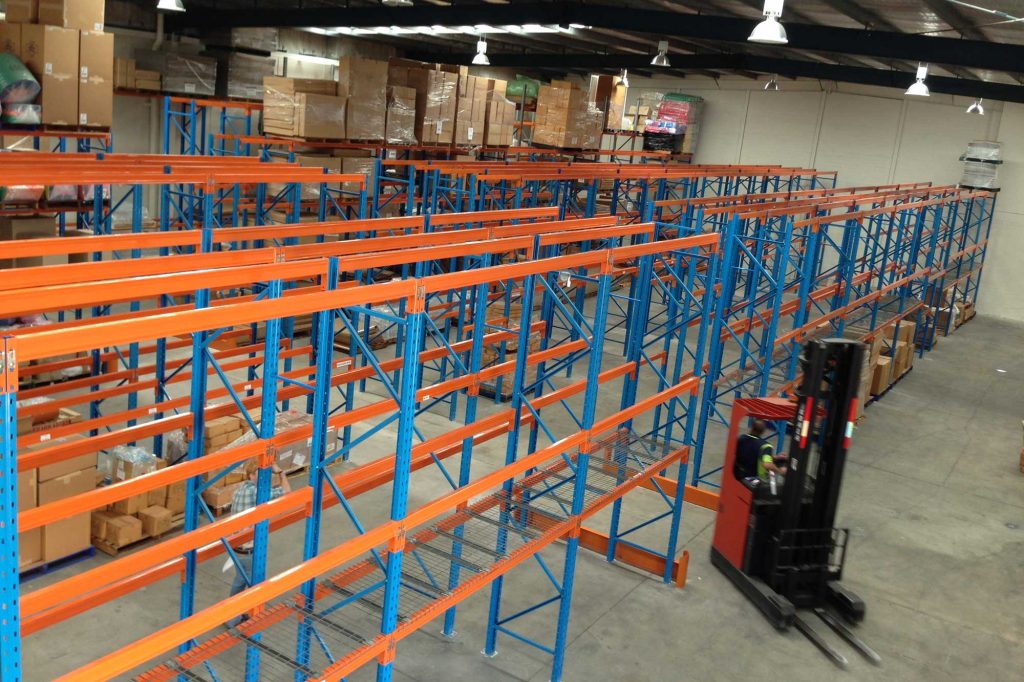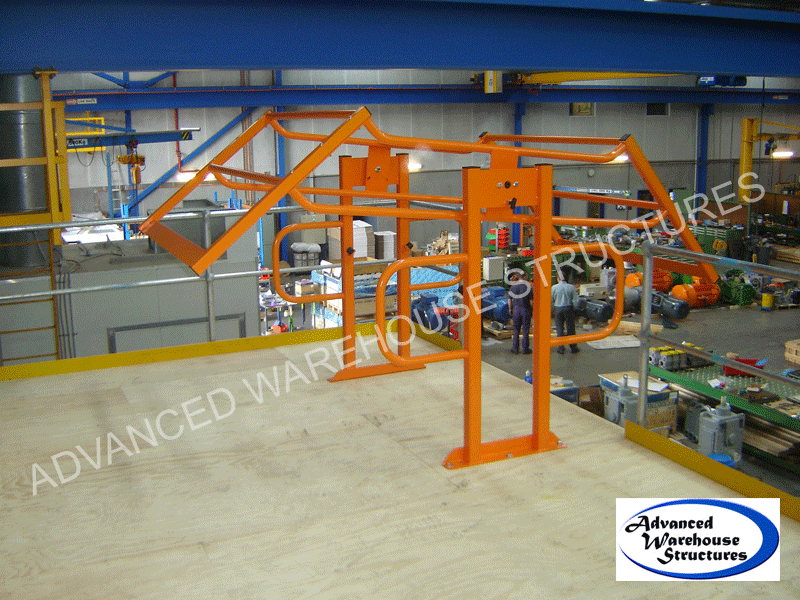Fortifying Warehouse Shelving Against Natural Disasters: A Comprehensive Guide
Durable warehouse shelving against natural disasters is a crucial aspect of warehouse management. In the face of unpredictable weather, unsecured shelving systems pose a serious risk to your inventory, equipment, and — most importantly — staff safety.
In this guide, we'll explore the critical need to be prepared for any situation, spotlighting the potential havoc wreaked by natural disasters on vulnerable businesses and their shelving systems.
We'll uncover the strategies and materials businesses all across Australia use to bolster their shelving so that you can stand firm against even the most extreme conditions.

Assessing Risk and Preparing for Various Disasters
Warehouses must be prepared for a range of challenges, including natural disasters and their unique impact on structures and inventory.
Understanding these threats is the first step in fortifying your warehouse's shelving systems.
Identifying Potential Threats
Recognise the types of natural disasters that can affect your area, such as earthquakes, floods, or hurricanes. Each disaster poses different challenges to warehouse structures, from water damage to structural instability.
Risk Assessment for Warehouses
Utilise tools like structural audits and vulnerability assessments to evaluate how your current shelving systems might respond to these disasters. This involves checking the integrity of racks, the suitability of materials, and the stability of the overall structure.
Customising Disaster Preparedness Plans
Develop tailored strategies that take into account your specific location and warehouse design. This could mean reinforcing shelving against seismic activity in earthquake-prone areas or elevating storage systems in regions that are susceptible to flooding.

Design and Material Considerations for Disaster-Resilient Shelving
Choosing the appropriate materials and designs for shelving is crucial in creating a disaster-resilient warehouse.
These choices play an important role in ensuring the safety and durability of the storage systems, even in extreme conditions.
Choosing the Right Materials
Opt for materials known for their strength and resilience, like heavy-duty steel, which can withstand substantial stress and strain. Materials should be chosen based on their ability to endure specific disaster-related impacts, such as water resistance in flood-prone areas.
Innovative Shelving Design Features
To enhance stability, incorporate design elements like reinforced framing, bracing, and anchoring systems. Consider adjustable shelving features that allow for easy reconfiguration based on changing storage needs or emergency situations.
Regulatory Compliance and Standards
Ensure all shelving solutions adhere to your industry-specific safety standards and regulations. This includes checking for compliance with seismic codes in earthquake-prone areas or flood zone construction standards. Taking action ahead of time will give your shelving system a better chance of withstanding disaster scenarios.

Securing Inventory and Shelving Units
To make sure you're adequately prepared for disaster, you need to ensure the stability of your shelving units and the safety of your stored items.
Combine the proper techniques with regular maintenance, and you'll significantly reduce the risk of damage.
Effective Anchoring Techniques
Anchor shelving units securely to the walls and floor. This prevents tipping or collapsing during events like earthquakes or severe wind. Use heavy-duty brackets and anchoring hardware designed for the specific type of shelving and wall material.
Inventory Stabilisation Methods
Organise items on shelves strategically to minimise movement and potential damage. Heavier items should be stored on lower shelves. The use of restraints, like bungee cords or shelf lips, can prevent items from falling.
Regular Maintenance and Inspection Protocols
Implement a routine schedule for inspecting shelving units for any signs of wear or damage. Make sure that all anchoring systems remain tight and effective. Regularly assess the arrangement of items to maintain optimal stability, efficiency, and accessibility.

Implementing Advanced Technologies for Enhanced Safety
Incorporating advanced technologies into your warehouse shelving system will greatly enhance your safety and preparedness.
These innovations offer real-time insights and automated responses, crucial for safeguarding supplies and inventory.
Integration of Sensor Technologies
Install IoT sensors to monitor the stability of shelving units and environmental conditions. These sensors can alert warehouse managers to potential risks, such as structural weaknesses or capacity overloads, particularly in areas storing critical supplies or heavy pallets.
Automated Emergency Responses
Implement systems that automatically respond to disaster scenarios. For example, automated racking protection can lock down shelves, securing products in place and reducing the risk of damage.
Data-Driven Decision Making
Use analytics to refine disaster preparedness strategies. Continuously collected data informs planning, ensuring that your shelving systems are optimally designed for both everyday efficiency and emergency situations, with security and protection of goods as a priority.

Training Staff for Emergency Preparedness
Empowering your workers with the knowledge and skills to handle emergencies is a critical component of warehouse safety.
Here are some ways to develop effective training and response protocols for your staff:
Developing a Disaster Response Plan
Create comprehensive emergency response procedures and ensure that all employees are well-versed in them. This includes understanding the layout of the space, as well as the specific roles and responsibilities during an emergency.
Conducting Regular Drills and Training Sessions
Regularly scheduled drills and hands-on training sessions are essential to reinforce your response plan. This practice helps your team of staff internalise the procedures and act swiftly when a real disaster strikes.
Creating a Culture of Safety and Awareness
Foster a workplace environment where safety is a shared responsibility. Encourage employees to stay informed about potential hazards and the latest safety practices in warehouse operation.
This ongoing education strengthens the overall preparedness of your company, ensuring that each person plays a role in maintaining a secure and disaster-ready warehouse.

Ensuring Long-Term Resilience and Preparedness
Disaster resilience for your warehouse hinges on:
- Robust shelving design
- Effective use of technology
- Staff training
- Emergency response planning.
Embracing these elements ensures not only the safety of goods but, more importantly, the well-being of your workers.
Disaster preparedness is not a one-time task but an evolving process. Regularly assess and update your shelving systems to keep pace with new standards and technologies. Continuous improvement will help safeguard against future risks. Using the information in this article will help make sure that your warehouse remains a safe and efficient space for business operations.
Are you ready to strengthen your warehouse against the unforeseen? Contact Advanced Warehouse Structures today for a comprehensive assessment and tailored solutions to secure your shelving systems against natural disasters. Ensure the safety of your goods and peace of mind — let's build a resilient future together.
